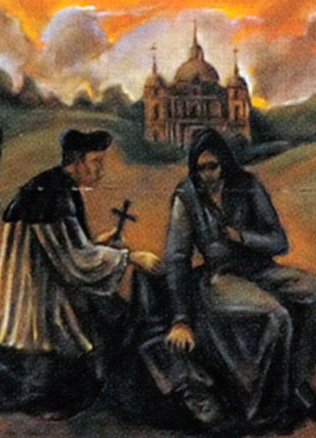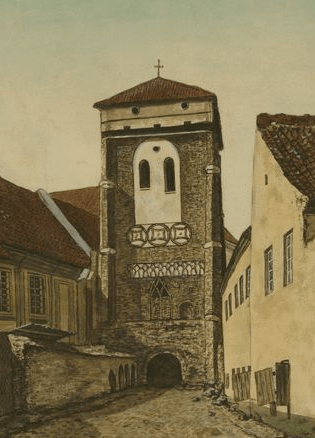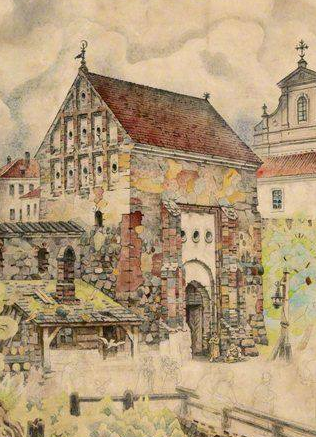The Anthropological Examination of Albertas Goštautas’ body
Albertas Goštautas (1480-1539) was voivode of Vilnius voivodeship and chancellor of the Grand Duchy of Lithuania. He was awarded the Count of Geranainiai title by the Holy Roman Emperor Charles V. Albertas Goštautas was the richest and the most influential figure in Lithuania at the time. He greatly contributed to strengthening the political independence of the Grand Duchy of Lithuania. In 1529 he supervised the drafting of the First Statute of Lithuania. It was through his efforts that in 1529 the underage Sigismund II Augustus was proclaimed Grand Duke. He is believed to have initiated the most comprehensive version of Lithuanian chronicles known as Bychowiec Chronicle.
Albertas Goštautas died in December 1539 and was buried in the Cathedral of Vilnius, in his family crypt under the Goštautas Chapel, in the southern part of the cathedral.
On the western wall of the current Goštautas family chapel there is a monumental plaque, a 2.2 x 1.2 meter pink marble slab considered to be the oldest professional memorial sculpture work of the Renaissance epoch extant in Lithuania. It is believed that its author, Bernardino Zanobi de Gianotis took part in reconstructing Vilnius cathedral and expanding the palace of the grand dukes. The memorial plaque depicts a heavily-built bald man in armour, holding a flag.
Discovery in the Vilnius cathedral wall
In the course of its history, Vilnius cathedral has been often rebuilt. The last reconstruction leading to its present appearance was carried out at the end of the 18th century, under the supervision of Laurynas Gucevičius. Not only the exterior of the cathedral but also the interior was changed. Part of memorial plaques on the walls and pillars as well as burial places under the floor and in the vaults could have been rearranged. Over time, they were forgotten, the exact place of Albertas Goštautas’ burial was not known. It was only in January 1989, in the process of interior work that a hollow was detected in the western wall of the Goštautas Chapel, behind the Albertas Goštautas memorial plaque. With the help of a special periscope it was established that there was a burial in it. Part of the wall was dismantled and a 1m long and 0.5m high niche was discovered that was bricked off in the 18th century when building the wall, most probably during the last reconstruction. Thus, it was then that the memorial plaque of Albertas Goštautas was built into the wall.
The well-preserved bones were lying in a disorderly way in a pinewood box less than one meter long.
Together with the remains, some velvet shreds were found – pieces of former outer coffin drapes, and silk cloth pieces – fragments of the clothing of the buried person. The gossamer silk splendour and the elements of décor (the pomegranate blossom motif, plant stems decorated with crowns characteristic of the Gothic style, the olive leaf motif and the composition of all the elements) are characteristic of the silk woven in Italian cities at the end of the 15th–the beginning of the 16th century.
What did the bones reveal about the once most powerful person in Lithuania?
The remains belonged to a man of about 60 years of age, heavily built and very tall for those times (about 180cm). All the bones were in place (except for a few hand and foot bones, which must have been lost during re-burial). The lower jawbone was missing in the skull; no pathology was found, most teeth were lost before death, mild, age-related degenerative changes in the spine and joints were established (signs of intervertebral disk herniation on lumbar vertebrae – the consequence of riding and physical exertion, the right shoulder joint osteoarthritis (which would witness larger loads on this joint – frequent broad movements of the right arm, traces of a healed left tibial fracture.
Comparison of the skull and the portrait of Albertas Goštautas on the funerary plaque showed that the anatomic points coincided. Thus, during this examination, the authenticity of the image on the memorial plaque was established, too.
Do You Know?
The anthropological examination provided new information about the physical characteristics of Albertas Goštautas; he was a tall, heavily built man leading an active lifestyle (riding, using a sword). The examination confirmed that the memorial plaque was made in accordance with the “live“ model – most probably during the artist’s meetings with Albertas Goštautas.
Literature: V. Urbanavičius, R. Jankauskas, L. Vedrickienė, A. Širmulis Alberto Goštauto kapas in: Mokslas ir Lietuva, volume 3, p. 121-125
Rimantas Jankauskas



